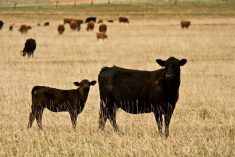CNS Canada — With the uncertainty regarding the pulse exports to India, it’s looking like 2018 could see more canola acres planted in Canada.
Statistics Canada will release its Principal Field Crop Areas report on Friday (April 27). Last year saw Canada’s canola area at a record 23 million acres, but this year could again set a record. Average trade estimates peg canola at 23.7 million to 24.3 million acres.
“The economic trend of canola is still strong enough both for old and new crop to suggest profitable pricing opportunities in the year ahead. (This) is going to lead to canola acres going up,” said Mike Jubinville of ProFarmer Canada in Winnipeg.
Read Also

U.S. grains: Soybeans bounce as Chinese demand assessed, wheat drops
Chicago soybean prices firmed on Friday in a bargain-buying bounce after a sharp fall on Thursday, as traders assessed prospects for more U.S. sales to China after the trade war truce between the countries.
Last summer saw large areas of Western Canada suffer from drought. According to Jubinville, farmers usually shy away from canola during dry stretches, but with snowfalls in March and April, soil is starting to be replenished.
“Canola doesn’t respond well to (drought) but if we get some kind of reasonable start, precipitation- and soil moisture-wise, in those troubled areas we may pick up more acres there than we thought.”
While acreage is set to grow for canola, pulse acres are predicted to drop. With exports to India non-existent due to import tariffs, farmers are expected to switch to crops with more promising market opportunities.
Average trade estimates have pea acres at 3.2 million to 3.7 million acres, compared to 4.1 million acres last year, while lentil estimates are at three million to 3.9 million, compared to 4.4 million last year.
“The market is discouraged. And then last year there were some farmers that were discouraged with lentils because of the poor yields in the main lentil-growing area,” said Jerry Klassen, manager of Canadian operations with Swiss-based GAP SA Grains and Products in Winnipeg.
Errol Anderson of ProMarket Communications in Calgary is feeling more optimistic about the pulse crop outlook than his counterparts. He thinks that “somewhere, somewhere, somewhere,” India is going to have to back off and then pulse prices will spring back up again. He is recommending farmers stick to their usual pea acreage and be prepared to store the harvested crop for a while.
While canola acres are on the rise, soybean acres could slightly fall. Last year saw a record 7.3 million Canadian acres planted, with Saskatchewan farmers testing out the crop. This year, trade estimates are pegged at 6.8 million to 7.9 million acres.
“I think further out west there was some disappointment with how their soybean experiment turned out last year,” Jubinville said. “So I think you may have some modest retrenchment in acreage expectations out west, particularly in Saskatchewan.”
Overall, industry professionals expect to see acres switch back to the traditional western Canadian crops of wheat, barley, oats and canola, while special-crop acres, such as in lentils and peas, fall.
“The price structure is really favouring the canola,” Klassen said. “I think also the barley market is quite strong, it has low input costs. And then also durum spring wheat, I think that farmers realize they can get very good yields.”
— Ashley Robinson writes for Commodity News Service Canada, a Glacier FarmMedia company specializing in grain and commodity market reporting. Follow her at @AshleyMR1993 on Twitter.
Table: Pre-report trade guesses, in millions of acres.
| Pre-report | StatsCan | |
| estimates. . | 2017-18 | |
| Canola | 23.700 – 24.300 | 22.997 |
| * All wheat. . | 20.500 – 24.200 | 22.551 |
| Durum | 4.800 – 5.700 | 5.205 |
| Barley | 5.250 – 6.800 | 5.766 |
| Flaxseed | 0.900 – 1.200 | 1.040 |
| Oats | 3.000 – 3.400 | 3.200 |
| Peas | 3.200 – 3.700 | 4.093 |
| Lentils | 3.000 – 3.850 | 4.405 |
| Soybeans | 6.800 – 7.850 | 7.282 |
* – Includes winter wheat remaining















